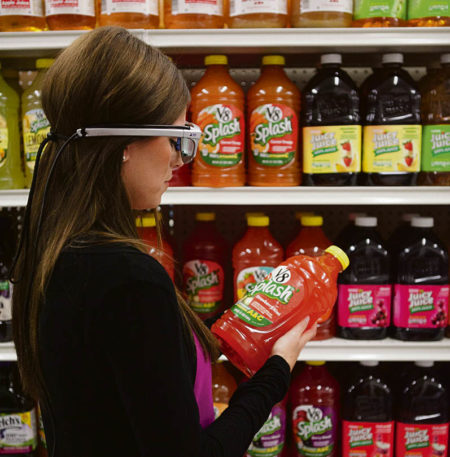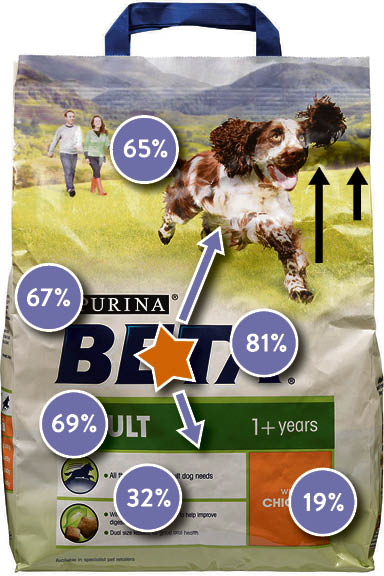Have you ever wondered why the shopping list you made at home never tallies with what ends up in your trolley at the supermarket checkout? That’s because much of your shopping experience is happening at the subconscious level and packaging is driving your decisions.
The colour, shape, design, logos and branding all nudge us to make choices in store. We succumb to instinct and default to the familiar as we walk down the aisles. Most of us are not robots that consistently rely on rational calculations. Instead, we are wired to look for so called shortcuts and make irrational decisions time and again, albeit in predictable ways.
 “People simply don’t have the time or mental bandwidth to actively compare all the options in a category,” says Scott Young, chief executive of PRS IN VIVO, a market research agency focused on packaging, shopper marketing and new product innovation. “So our decisions are driven by ingrained habits and by which packs are quickly seen, recognised and understood.”
“People simply don’t have the time or mental bandwidth to actively compare all the options in a category,” says Scott Young, chief executive of PRS IN VIVO, a market research agency focused on packaging, shopper marketing and new product innovation. “So our decisions are driven by ingrained habits and by which packs are quickly seen, recognised and understood.”
The proliferation of choice across many retail environments has made it much harder for packs to break through the clutter. This is one reason why marketeers are increasingly interested in deciphering shopper behaviour. Millennials are a particular challenge as they are less likely to be brand loyal or be influenced by traditional advertising.
Behavioural economics is the study of how we actually make decisions and why we choose to buy certain categories or products. It goes beyond traditional rational economics by taking into account that there is a strong social, contextual and irrational element to how humans function.
This science is now very much part of the lexicon of consumer goods companies and retailers in the UK, and the future of packaging is being increasingly driven by learnings from this research discipline.
“It is a new way for us to think about shopping behaviour and to help our clients develop more successful packaging, in-store communication and new product launches,” explains Mr Young.
Packaging is a consumer’s single most important touchpoint with a brand; it needs to embody a brand’s core values and convey the product’s unique selling point
The science is now evolving rapidly. Retailers, manufacturers and market researchers cannot only monitor the choices we make, but they can influence them too. For example, online retailers such as Amazon and Netflix are aware of your previous purchases, so they suggest books and movies that you’re expected to like. They generate suggestions that nudge you in the right direction. The supermarket shelves in Sainsbury’s, Asda and Lidl employ similar tactics with consumer goods.
“Many corporations are increasingly using sophisticated behavioural economics to influence the consumer,” says Andy Rushforth, managing director at PRS IN VIVO UK, who works with companies such as Unilever, P&G and Nestlé. “A great pack is a key part of that process. For starters, you have to be seen in-store to be bought.”
[embed_related]
In addition to a product standing out on the shelf, it is critical for packs to differentiate and justify price premiums. That is particularly challenging for well-known brands in an age where discounters have made price an all-important factor, especially post-Brexit with prospective inflation inflamed by the slide of sterling.
“In this volatile economic climate, it is increasingly important for brands to connect on a visceral or emotional level with shoppers,” says Mr Rushforth. “Packaging is a consumer’s single most important touchpoint with a brand; it needs to embody a brand’s core values and convey the product’s unique selling point.”
In this tough environment, it is absolutely vital for marketeers to get their packaging right. But to do so, they cannot always rely on what shoppers tell them because shoppers are not a reliable source when it comes to describing their own behaviour.
“What shoppers say often does not correspond to what they do in-store – this creates a major challenge for us,” says Mr Young, whose company conducts more than 1,000 packaging and shopper studies each year, “and it means that we need to focus on observing actual behaviour, rather than asking questions.”
 This is one reason why PRS IN VIVO extensively uses different types of eye-tracking in its research, both in actual and simulated stores. This technology allows their researchers to see what shoppers focus on and what they ignore. It helps ensure packaging attracts the eye and holds our attention.
This is one reason why PRS IN VIVO extensively uses different types of eye-tracking in its research, both in actual and simulated stores. This technology allows their researchers to see what shoppers focus on and what they ignore. It helps ensure packaging attracts the eye and holds our attention.
“Eye-tracking is valuable because it captures subconscious behaviour, which shoppers typically lack the vocabulary to tell us about because it happens so quickly,” says Mr Rushforth.
The company is continually expanding its network of ShopperLabs, with multiple locations both in the UK and across the world. These mini-stores can be customised to look like a section of a supermarket or many other retail environments, such as pharmacies, pet stores or convenience outlets.
The ShopperLabs are often used to simulate the introduction of new products and packaging systems, with cameras and two-way mirrors allowing researchers to observe consumers behaving in a very natural way in the aisles.
“So many new products fail because they are developed and screened in isolation, far removed from competitors and the realities of the store and the shopping process. If we want to create and effectively assess truly breakthrough ideas and innovative packs, we need to start in the aisle,” explains Mr Rushforth. “The fact is people do not really know what they want, until they see it in context on the shelf.”
As researchers continue to learn about the complexities of human decision-making, they are increasingly recognising the power of packaging. Behavioural economics represents an important step forward on both counts.
“This new framework encourages us to dive beneath the surface and think beyond rational claims in developing and testing new packaging,” says Mr Young, “and it also continually reminds us and our clients that great packaging can influence so many purchase decisions.”
For more information please visit www.prs-invivo.com






